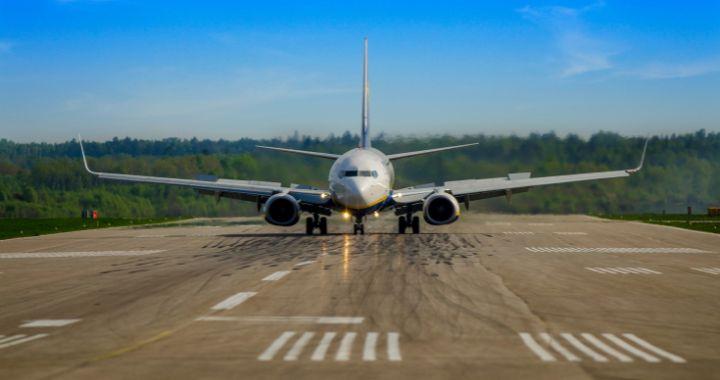Landing distance is the horizontal distance between a point on the approach path at a selected height to the point on the landing surface where the airplane comes to a complete halt. Every pilot knows the importance of landing distance as it is a major determinant of whether the airplane will land perfectly without issues or not. This is why it’s important to ensure that landing distance is always calculated correctly with the utmost precision and accuracy.
Landing distance can be calculated during pre-flight preparation (dispatch) and in-flight (when the airplane is en route to its destination). Two additional details that are required for calculating landing distance are Landing Distance Available (LDA) and Landing Distance Required (LDR). LDA is the length of the runway that is available for the ground run of the airplane as declared by the appropriate authorities. LDR is the actual landing distance for the plane and the additional safety distance is added to cater for the effect of varying factors.
Landing distance can be influenced by different factors which change from dispatch conditions to inflight conditions. Some of these influencing factors include airplane mass, wind, air temperature, pressure altitude, approach speed increments, and runway slope. With these varying factors, landing distance must be accurately calculated to avoid mishap situations.
This article will provide a step-by-step guide on how to accurately calculate landing distance using the Landing Distance Chart and Landing Distance Table.

How To Calculate Landing Distance
Landing distance is calculated with the Landing Distance Chart or Landing Distance Table. Both tools are correspondingly for the calculation of takeoff and landing distances. We will look at how to calculate landing distance using both tools.

Using Landing Distance Chart
Step 1
To calculate landing distance, the first step is to flip to the Landing Distance Chart in the Aircraft Flight Manual (AFM) or Pilot Operating Handbook (POH). The chart is a suitable guideline for pilots in the aircraft and it can be stored in the electronic flight bag.
Step 2
After handling the chart, properly label it with the conditions to consider for landing. Begin by identifying the outside air temperature (OAT) during the flight en route destination.
Step 3
Next, identify the pressure altitude and draw a line from the OAT upwards until it intersects with the respective pressure altitude line.
Step 4
From the pressure altitude point, move straight to the next section across, and reference the nearest trend lines to draw your line until it intersects your aircraft weight (pounds). From the aircraft weight, move straight across to the wind component.
Step 5
In a similar fashion, follow the tailwind or headwind component trend lines until you hit the appropriate wind speed. Then, move straight across to obstacle height.
Step 6
As with the previous two sections, reference the nearest trend lines and draw your line accordingly depending upon the height of the obstacle.
Step 7
Last, move straight across to find your total distance.
( Image source )

Using the Table
Step 1
To begin, flip to the Landing Distance Table in the Aircraft Flight Manual (AFM) or Pilot Operating Handbook (POH).
Step 2
Next, identify the landing type and the associated conditions. The landing type commonly used is the short-field landing type.
Step 3
Identify the field pressure altitude on the table.
Step 4
Identify the temperature at the time of landing and locate the corresponding column nearest to this identified temperature.
Step 5
Move down the provided columns to the corresponding pressure altitude to determine the ground roll and distance needed to clear a 50-foot obstacle. This is the actual landing distance.
Step 6
Take into consideration variables that affect the landing performance such as runway suitability, headwind, tailwind, etc. Then, add some additional distance to the actual landing distance to create some buffer room. Finally, this is the landing distance required.
Aircraft Landing Distance Chart
Cessna Aircraft
- M2: 2,590 ft
- CJ: 2,600 ft
- CJ1: 2,760 ft
- CJ2: 2,612 ft
- CJ3: 2,770 ft
- CJ4: 2,940 ft
- Citation 10: 2,733 ft
Bombardier Aircraft
- Challenger 300: 2,290 ft
- Challenger 600: 3,050 ft
- Lear Jet 40: 4,060ft
- Lear Jet 60: 3,048 ft
- Global Express: 2,236 ft
Gulfstream
- G200: 2,590 ft
- G280: 2,373 ft
- G450: 2,663 ft
- G500: 2,620 ft
- G550: 2,240 ft
- G600: 3,100 ft
- G650: 2-680 ft
Dassault
- Falcon 50: 2,673 ft
- Falcon 900: 2,415 ft
- Falcon 2000: 2,260 ft
Embraer
- Legacy 100: 2,430 ft
- Legacy 500: 2,114 ft
- Legacy 600: 2,683 ft
- Legacy 650: 2,346 ft
Landing distance is an important detail for every safe flight.
While passengers might not be too concerned with calculating landing distances for an airplane, pilots know of its importance. Inaccurate calculations will always spell problems no matter how many pilots fly a plane. So, knowing how to calculate landing distance and also doing it properly is paramount.
For more information on different aspects of flights, airplanes, and aviation, consult our blog.
Looking for a comfortable way to fly? JetBed is your best bet for convenience and satisfaction. With custom-designed JetBeds to meet your every need, there’s no better alternative. JetBed offers proper relaxation and vitality while coursing in the air from one point to another.

